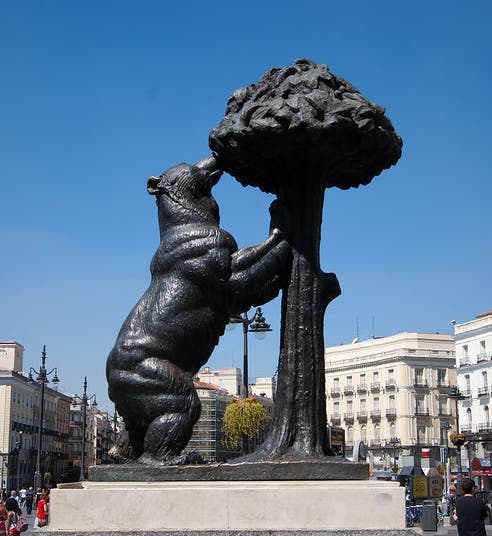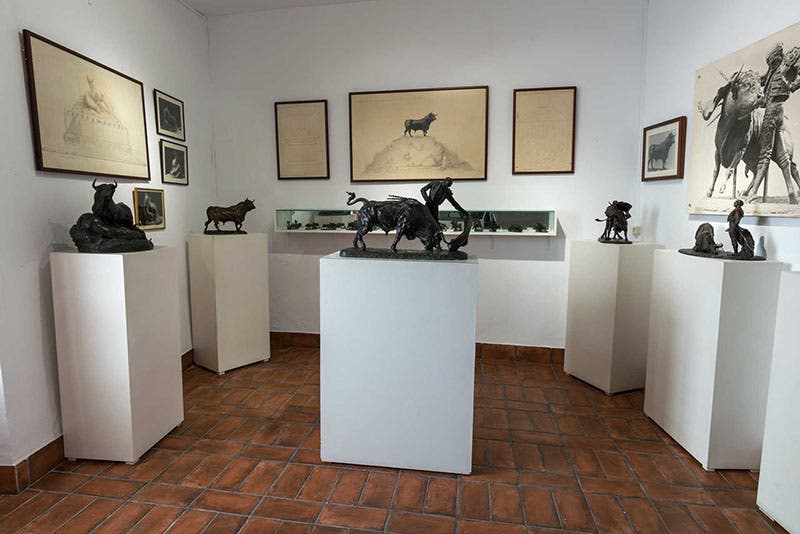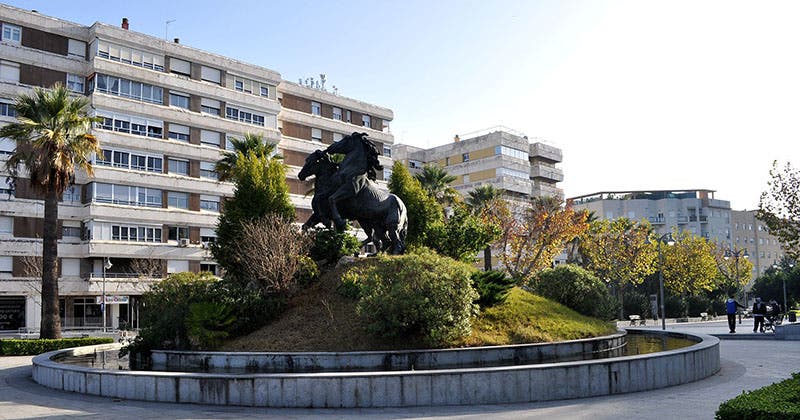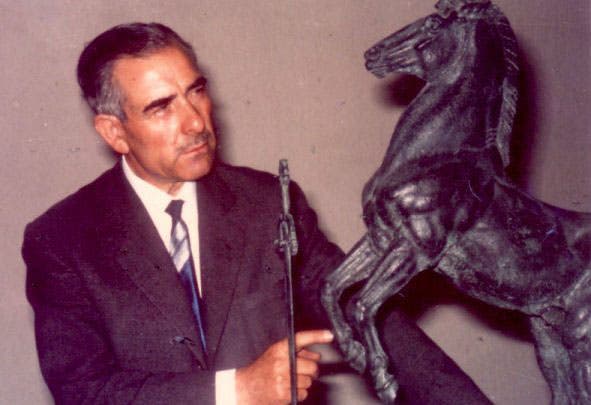Scientist of the Day - Antonio Navarro Santafé
Antonio Navarro Santafé, a Spanish sculptor, was born Dec. 22, 1906, in the town of Villena in Valencia Community, over near the eastern Mediterranean coast. He was an academic sculptor, in that he earned at least part of his living by teaching at art schools in Madrid and elsewhere. And although he produced a variety of sculpture, in bronze and in stone, if we look inside the Museo Antonia Navarro Santafé in Villena, we see mostly animal sculptures (second and third images). If Santafé had lived in France a half-century earlier, he would have been known as an animalier, a title of honor worn by the likes of Emmanuel Frémiet and Antoine-Louis Barye.
In the first view of the museum interior (second image, just above), we see in the foreground a small version of Santafé's most famous creation: El Oso y el Madrońo – The Bear and the Strawberry Tree. El oso y el madrońo has been a symbol of the city of Madrid since medieval times, and you could find signs of it long before Santafé, such as on old man-hole covers. In 1967, the Madrid city fathers commissioned a large bronze sculpture of the fruit-seeking bear from Santafé, to be placed in the Puerta del Sol at the center of the city (first image). The resulting statue is some 13 feet tall and weighs 22 tons. It has now become the official version of the symbol of Madrid, and one finds it everywhere, within the city and without. I even have a refrigerator magnet of Santafé’s El Oso, courtesy of my daughter, who visited Madrid some years back. The tree, by the way, is not related to the strawberry, but its large, red, pulpy fruit does resemble the smaller and more familiar berry.
It is interesting that the small version of El Oso in the Santafé Musem is much more lively and, in my opinion, more attractive than the large one in Puerto del Sol – the tree is gnarly and twisted, and the bear is much more animated. I wonder if the Madrid city fathers had any input as to which bear-and-tree was more fit for public consumption. Perhaps the answer lies in the museum, so I hope one of us visits sometime soon and solves the puzzle as to why the smaller version is not now the symbol of Madrid.
It should not surprise us that most of the other bronze animals in Santafé’s musem (except for a beautiful bugling stag) are either horses or bulls, with and without matadors. This is Spain, after all. Santafé sculpted a kneeling matador and bull for a square in Cadiz, and a group of horses for the Plaza del Caballo in Jerez de la Frontera, Andalusia (fourth image, above).
There are very few portraits or photographs of Santafe in the public realm �– I do not know why. There are many portraits of his namesake, José Antonio Navarro, the Texas revolutionary who led an expedition to Santa Fe, and with whom our Santafé should not be confused.
The Santafé musem in Villena is not far from one of the great surviving medieval castles in Spain, la Atalaya, which is right in the middle of downtown. This is yet another incentive to go check out the little El Oso y el Madrońo in Villena, after you have seen the big one in Madrid.
Dr. William B. Ashworth, Jr., Consultant for the History of Science, Linda Hall Library and Associate Professor emeritus, Department of History, University of Missouri-Kansas City. Comments or corrections are welcome; please direct to ashworthw@umkc.edu.








![Using an astrolabe to measure the depth of a well, woodcut in Elucidatio fabricae vsusq[ue] astrolabii, by Johannes Stöffler, 1513 (Linda Hall Library)](https://assets-us-01.kc-usercontent.com:443/9dd25524-761a-000d-d79f-86a5086d4774/a998eb50-55d2-4a88-ace2-a50aa5fa86e7/Stoffler%201.jpg?w=210&h=210&auto=format&fit=crop)

